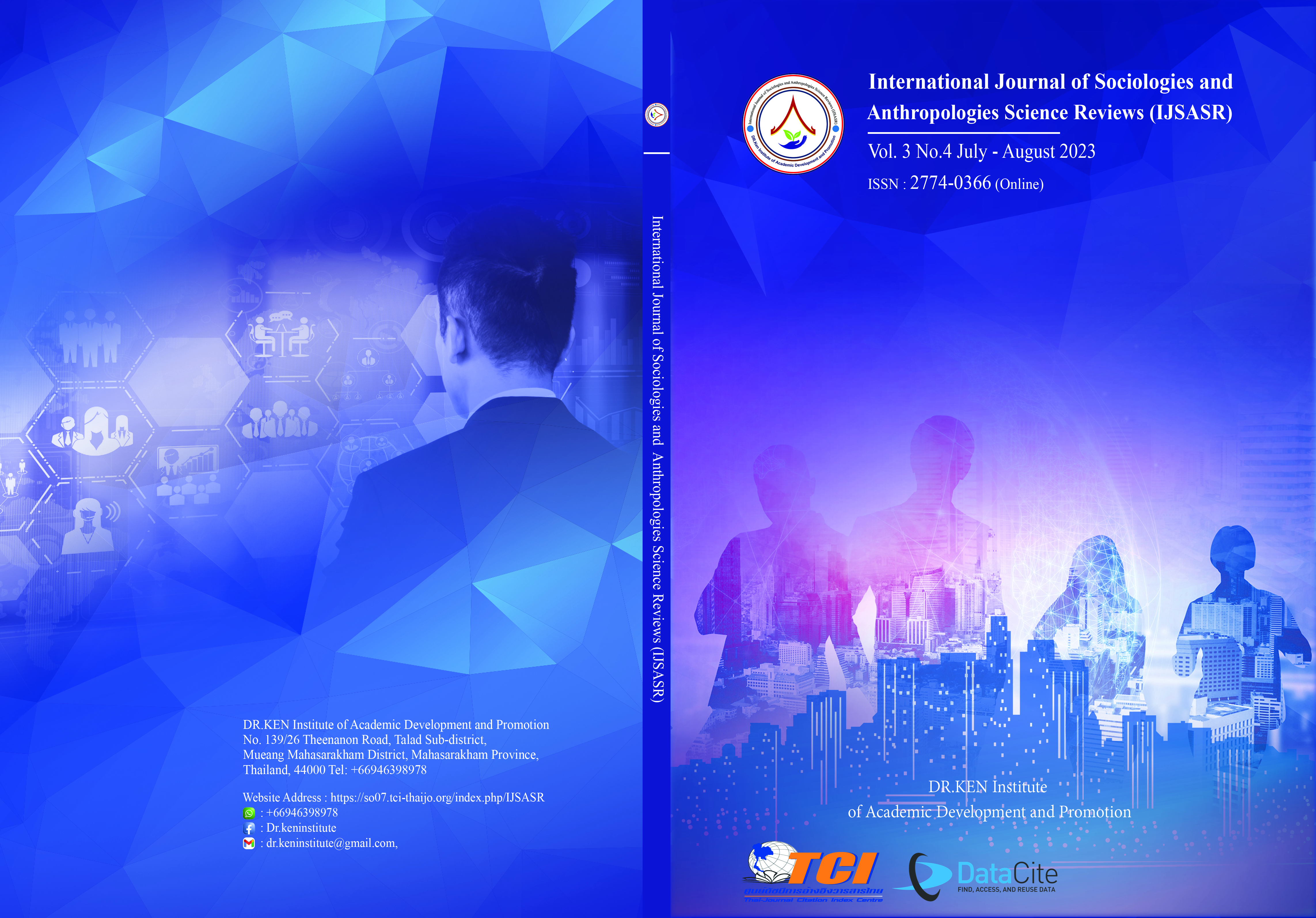Developing International Education - Classified Display of Chinese Gardens and Landscape Gardens Museum
Main Article Content
Abstract
Background and Aim: Promoting the development of international education is an important international education trend in the world today. It has had or is having a far-reaching impact on the education of all countries in the world, whether it is formal education or non-formal education (Gu, M., 2020). The "Course Plan for Technicians in Museums and Exhibition Halls" is mentioned in the book "Classification of International Education Standards" prepared by the UNESCO Education Statistics Bureau (1998). It can be seen that as early as the initial stage of international education development, the international education undertakings responsible for education, cultural inheritance, and exchange have attracted long-term attention to the museum industry. The combination of international education and museum display education can develop the way of international education, improve the exchange channels of international education, use the intuition and authenticity of museum display education, and improve the communication channels and paths of Chinese culture, which is an important way to improve the soft power of modern countries.
Materials and Methods: This study uses descriptive research methods and attribute classification methods to try to classify garden cultural relics. The descriptive research method is simple. It interprets existing phenomena, laws, and theories through its understanding and verification, raises questions in a targeted way, and reveals the drawbacks. The law of attribute classification takes the social and scientific and cultural attributes of cultural relics as the standard to classify cultural relics. That is, the classification method is based on the nature of cultural relics. Cultural relics are the relics of human social activities and have cultural attributes. Therefore, when using the attribute classification method, this study clarifies the use and deep meaning of cultural relics to accurately confirm their nature, and then carry out research.
Results: The development of international education is the evolution trend of education for the world and the public. Make good use of the current museum public service facilities education platform to build good communication and communication channels, which is conducive to the development of international education.
Conclusion: Based on the existing collection classification principles and characteristics, we will innovate the classification display method, make new attempts to improve the classification display education method, and build a collection classification system in line with the functional positioning, collection attributes, and development planning of the library. It is a useful attempt to combine international education with museum education and museum classification to improve the mode of museum education, implement the essence of the curriculum plan of international education development museums and exhibition halls into specific practical work, and enrich the content of museum education through new exhibition classification.
Article Details

This work is licensed under a Creative Commons Attribution-NonCommercial-NoDerivatives 4.0 International License.
Copyright on any article in the International Journal of Sociologies and Anthropologies Science Reviews is retained by the author(s) under the under the Creative Commons Attribution-NonCommercial-NoDerivatives 4.0 International License. Permission to use text, content, images, etc. of publication. Any user to read, download, copy, distribute, print, search, or link to the full texts of articles, crawl them for indexing, pass them as data to software, or use them for any other lawful purpose. But do not use it for commercial use or with the intent to benefit any business.

References
Bai, G. (2000). On the Scientific Principles of Literature Classification. Journal of Handan Normal University, 4,72.
Chang, L., Wang, X., & Zhao, D. (2018). Research on the Classification System of Landscape Museum Collections. Museum Research,53.
Fu, Z. (1957). Introduction to Museum Science. Beijing: Commercial Press,
Gu, M. (2020).The New Ideas of International Education. (Revised Edition). Beijing: Education Science Press.
Ju, G., & Cao, B. (2023).The UK International Education Impact Study. Education Journal of the Renmin University of China. (01), 110-121.
Li, X. (2005). Cultural Heritage. Beijing: Xueyuan Publishing House.
Rui, C.D. (2019).The evolution of the OECD's international education indicators and its global education governance function. Education Research of Tsinghua University. (05), 69-74 + 90. doi:10.14138/j.1001-4519.2019.05.006906.
Song, B. (2002). Museum People's Series Song Boyun's Selected Works of Museum Studies. Shaanxi: Shaanxi People's Publishing House.
Song, B. (2002). Selected Works of Museum People's Series Song Boyin's Museum Studies. Xi'an: Shaanxi People's Publishing House, 35.
State Administration of Cultural Heritage. (1992). Work Manual for the Preservation of Museum Collections. Beijing: Beijing Mass Publishing House.
UNESCO Bureau of Education Statistics. (1988). Classification of International Educational Standards. Beijing: People's Education Press.
Wan, K., Rao, C., & Xu, R. (2021). Focus and shift of learning investment research in the international education field. Modern Educational Technology. (04), 36-43.
Wang, H. (2001). Basics of Chinese Museum Studies. Shanghai: Shanghai Ancient Books Publishing House.
Zhou, W. (2008). Chinese Classical Garden History. Beijing: Tsinghua University Press.






